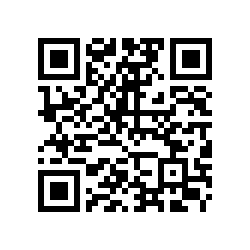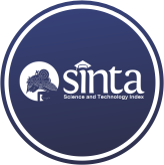Penyusunan Manajemen Risiko TI Berdasarkan Cobit 2019 I&T Risk Focus Area Untuk Digitalisasi Fintechco
(1) Telkom University, Indonesia
(2) Department of Computer and Systems Sciences, Stockholm University, Sweden
(3) Telkom University, Indonesia
(*) Corresponding Author
Abstract
Full Text:
PDFReferences
S. Palinggi and L. R. Allolinggi, “Analisa Deskriptif Industri Fintech di Indonesia: Regulasi dan Keamanan Jaringan dalam Perspektif Teknologi Digital,” Ekonomi dan Bisnis, vol. 6, no. 2, pp. 177–192, Jan. 2020, doi: 10.35590/jeb.v6i2.1327.
I. L. Ritonga and A. A. Dalimunte, “Efisiensi Penerapan Fintech dan Digitalisasi dalam Memaksimalkan Market Share Perbankan Syariah Pada Masa Pandemi Covid 19,” ALEXANDRIA (Journal of Economics, Business, & Entrepreneurship), vol. 3, no. 1, pp. 9–13, Apr. 2022, doi: 10.29303/alexandria.v3i1.173.
Peraturan Bank Indonesia, “PBI 19/12/2017 - Penyelenggaraan Teknologi Finansial,” 2017.
C. J. Tampubolon, Abdurrahman Lukman, and Mulyana Rahmat, “Control Self-Assessment (CSA) Pada Unit,” 2023.
P. M. Dewi, R. Fauzi, and R. Mulyana, “Perancangan Tata Kelola Teknologi Informasi Untuk Transformasi Digital Di Industri Perbankan Menggunakan Framework Cobit 2019 Domain Build, Acquire And Implement: Studi Kasus Bank XYZ, 2021.
IOSCO, “IOSCO Research Report on Financial Technologies (Fintech),” 2017. [Online]. Available: www.world-exchanges.org/home/index.php/files/18/Studies%20-
D. Arner, J. Barberis, R. Buckley, U. Law, D. W. Arner, and R. P. Buckley, “THE EVOLUTION OF FINTECH: A NEW POST-CRISIS PARADIGM?,” 2015.
R. Mulyana, L. Rusu, and E. Perjons, “How Hybrid IT Governance Mechanisms Influence Digital Transformation and Organizational Performance in the Banking and Insurance Industry of Indonesia,” ISD, 2023.
R. Mulyana, L. Rusu, and E. Perjons, “IT Governance Mechanisms that Influence Digital Transformation: A Delphi Study in Indonesian Banking and Insurance Industry,” PACIS, 2022.
F. Li, A. Nucciarelli, S. Roden, and G. Graham, “How smart cities transform operations models: A new research agenda for operations management in the digital economy,” Production Planning and Control, vol. 27, no. 6, pp. 514–528, Apr. 2016, doi: 10.1080/09537287.2016.1147096.
V. Ramaswamy and K. Ozcan, “Brand value co-creation in a digitalized world: An integrative framework and research implications,” International Journal of Research in Marketing, vol. 33, no. 1, pp. 93–106, Mar. 2016, doi: 10.1016/j.ijresmar.2015.07.001.
P. Leviäkangas, “Digitalisation of Finland’s transport sector,” Technol Soc, vol. 47, pp. 1–15, Nov. 2016, doi: 10.1016/j.techsoc.2016.07.001.
E. Baraldi and G. Nadin, “The challenges in digitalizing business relationships. The construction of an IT infrastructure for a textile-related business network,” Technovation, vol. 26, no. 10, pp. 1111–1126, Oct. 2006, doi: 10.1016/j.technovation.2005.09.016.
M. Pagani and C. Pardo, “The impact of digital technology on relationships in a business network,” Industrial Marketing Management, vol. 67, pp. 185–192, Nov. 2017, doi: 10.1016/j.indmarman.2017.08.009.
P. C. Verhoef et al., “Digital transformation: A multidisciplinary reflection and research agenda,” J Bus Res, vol. 122, pp. 889–901, Jan. 2021, doi: 10.1016/j.jbusres.2019.09.022.
Peraturan Otoritas Jasa Keuangan, “POJK 13-02-2018 - Inovasi Keuangan Digital di Sektor Jasa Keuangan,” 2018.
S. Vejseli and A. Rossmann, “The Impact of IT Governance on Firm Performance A Literature Review,” 2017.
Peraturan Menteri Badan Usaha Milik Negara, “PER-03-MBU-02-2018 tentang Panduan Penyusunan Pengelolaan TI BUMN,” 2018.
BUMN, “PER-2/MBU/03/2023 Tentang Pedoman Tata Kelola Dan Kegiatan Korporasi Signifikan Badan Usaha Milik Negara,” 2023.
ISACA, COBIT 2019 Framework Governance and Management Objectives. 2018.
ISACA, COBIT Focus Area: Information & Technology Risk. 2021. [Online]. Available: www.isaca.org
R. Mulyana, L. Rusu, and E. Perjons, “IT Governance Mechanisms Influence on Digital Transformation: A Systematic Liter a Systematic Literature Review,” AMCIS, 2021.
A. Hevner and S. Chatterjee, Design Research in Information Systems, vol. 22. Integrated Series in Information Systems, vol. 22. Boston, MA: Springer US, 2010. doi: 10.1007/978-1-4419-5653-8.
A. K. Shenton, “Strategies for ensuring trustworthiness in qualitative research projects,” Education for Information, vol. 22, no. 2, pp. 63–75, 2004, doi: 10.3233/EFI-2004-22201.
SFIA8, “Introduction to SFIA documentation Contents,” 2021. [Online]. Available: www.sfia-online.org
Gartner, “Gartner Magic Quadrant & Critical Capabilities,” 2023.
DOI: http://dx.doi.org/10.30645/j-sakti.v7i2.698
Refbacks
- There are currently no refbacks.
J-SAKTI (Jurnal Sains Komputer & Informatika)
Published Papers Indexed/Abstracted By:
Jumlah Kunjungan :



















